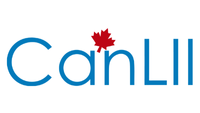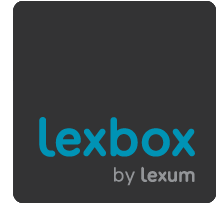Knowledge management (KM) professionals know that there are several elements that will make or break the success of a KM initiative. One such element is mostly humans: Will the lawyers in your organization actually adopt the industry leading enterprise search system that you are spending big bucks on?
At the same time, anyone who has a close or remote encounter with the law in Canada has CanLII.org open on one or several devices. The site, heavily used by Canadian lawyers, is a good example of a widespread adoption of technology by the legal profession and the judiciary. Also, if you bookmarked a CanLII document in 2001, even though the site underwent several overhauls, you’ll still be able to find that document by following your old link. CanLII is accessible everywhere, and it is always there. This is the very definition of something-as-a-service. Legal research, in this case.
Inspired by CanLII’s model, we at Lexum (the IT and publishing team behind CanLII.org and a for-profit corporation owned by CanLII) are exploring the idea of KM-as-a-Service: a resource that eliminates the risks related to the adoption of a KM solution by integrating your documented knowledge in a resource (CanLII that is) that your organization’s lawyers almost certainly use, and probably do so daily. In other words, we can integrate your own documented knowledge in CanLII. The following is a mix of our vision, development schedule, commercial pitch if you want, but mostly a validation attempt of the whole concept.
Four major milestones have been planned for so far that will shape the product.
Searching your documented knowledge alongside the CanLII content
Some of you have probably already noticed that Lexbox users may now upload their own documents in a secure private space and search them through CanLII. With respect to their internal documentation, users get the same search experience as the one on CanLII. We believe it just makes sense when you run a search on CanLII, to return results from your own private legal information, be it in the form of memos, briefs, etc. alongside CanLII’s statutes, cases, and commentary.
Leveraging the CanLII citation network in user documents
This feature basically means two things. The first one is, hyperlinking case and statute citations found in users’ documents. The second, derived from the first one, is including users’ documents in noteup results. If a user ever drafted a document referring to section 29 of the Copyright Act, for example, when said user runs a noteup of section 29, she or he will retrieve their own internal documents citing it.
Monitoring authorities to flag potentially outdated documents
Once the product knows which authorities users’ documents cite, we think it might be a good idea to push alerts for new CanLII content that has an impact on these authorities. If a user cited a case in their brief, and if this case is cited by a new case made available on CanLII, the user may want to get notified. This is especially true if the citing case contains hints (jalapeños) indicating cautionary of negative treatment. In other words, the system would notify you if we think cases cited in memos that are found in your KM system may no longer be good law (in which case the document that cites such a case may be due for an update).
Integrating with practice management solutions
Recording research activities in users’ practice management solutions for billing or document management purposes can bring important efficiency gains. There are great examples of such integrations provided by Fastcase, Casetext and Clio, to name a few. Clio has 16 integrations in the category of legal research. So why not bring CanLII closer to users practice management since so much research activity happens there. And this is number 4 on our list.
Milestone 1 is already there, 2, 3 and 4 are coming up by the end of this summer. Then, there will be 5, 6, 7 and so on, but much before that, we will continue holding many discussions with various groups and individuals over the coming weeks to listen, get feedback and adjust. Or go back to the drawing board. One thing we are kind of non-negotiable on is the cloud aspect of the offering. We are not planning any on-premise version of the platform, it is an as-a-service thing, after all…
Can this be a straightforward and obvious step in the evolution of legal KM? Does this approach have potential to simplify KM and to overcome buy-in hurdles? To make it more affordable, more accessible, “always there”? Can it solve 70% of users’ KM needs and be good enough so the majority of them don’t need the 30% left? We are convinced it is the way ahead and we are looking forward to trying it out.








